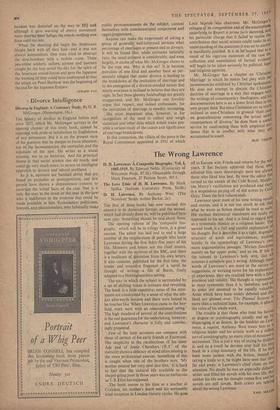After the Ball
WALTER LORD says that 577 people—all in some way involved in the event on December 7, 1941, which has come to be known as 'Pearl Harbour' —helped him to write this book. By using the technique of interviews combined with examina- tion of written accounts he has produced a picture of Pearl Harbour which tells more story than many of the earlier attempts. It is a less magnificent book than his A Night to Remem- ber—but the subject is a more diffuse and difficult one. The Titanic tragedy was all over in the time a cinema takes over a double-feature programme. The attack on Pearl Harbour began at 7.55 a.m. and ended before ten (that is, just long enough for a feature film, a newsreel and some trailers), but the story cannot be told compactly for it involved Tokyo, Washington and Hawaii; 96 American ships and 394 aircraft; 31 Japanese ships and 353 aircraft (plus an advance expedi- tionary force of 28 submarines). It cost the US 18 ships (although only 5 were knocked out for good), 188 aircraft and 2,400 men killed against only about 800 wounded—a staggering propor- tion by normal military standards, only partly explained by the fact that 1,400 were killed in an instant when the Arizona, a battleship, blew up. The Japanese casualties were disappointingly small, though they were a sitting target both before and after the attack.
These events, the last moments of America's uneasy peace in the Second World War, are the facts. What Walter Lord has done is to relate them through human beings in a way that makes them infinitely moving. On the whole he is a little less critical of American bungling than he was about British when dealing with the Titanic. But he tells how, in spite of a Washington cable, 'Hostile action possible at any moment,' General Short gave up thinking about a tapped telephone call from the Tokyo Yomiuri Shimbun to a local Japanese on December 6. He accused his counter- intelligence officer, Colonel Bicknell, of being 'too intelligence-conscious.' Perhaps the message was meaningless, but at such a time how could any- body be too alert? However, General Short's wife was waiting to be taken to a dance.
A radar station at 7.00 a.m. plotted a large flight of planes 137 miles away. A lieutenant, thinking they might be American, told the operator, 'Well, don't worry about it,' and the set was closed down ten minutes before the attack began.
A destroyer saw and fired on, depth-charged and sank what it assumed to be an enemy midget submarine (it was), but his message about the
incident was distorted on the way to HQ and although it gave warning of enemy movement more than'en hour before the attack,- nothing was done until too late.
When the shooting did begin the Americans fought back with all they had—and it was not always ammunition. One man tried to obstruct the dive-bombers with a mobile • crane. These peacetime soldiers, sailors, airmen and • marines caught on the hop saved the day for the spirit of the American armed forces and gave the Japanese the warning (if they could have understood it) that the attack on Pearl Harbour was the beginning of the end for the Japanese Empire.
GERARD FAY

































 Previous page
Previous page